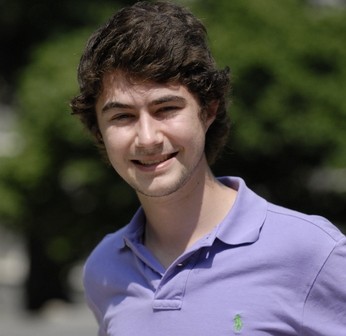As I sat on my couch sick one evening during the summer, I decided to watch a PBS documentary that had been sitting on my table for a few days, but I hadn’t had the time to watch. The documentary was entitled “Silicon Valley: Where the future was born.” Aside from a basic knowledge of Silicon Valley, fueled by movies like “The Social Network” and general news of companies in the media, all I knew was that Silicon Valley seemed to be a place of technological innovation, start-up companies and immense economic opportunity. What I did not know were its origins.
Within the first ten minutes of the documentary, the story of the valley’s transformation from that of wide, sprawling orchards to a modern-day tech haven was told. A central point of the story followed eight men who have been widely known as the founding fathers and catalysts for the valley’s growth, in which they would later found the company Fairchild Semiconductor (interestingly enough, the founder of Fairchild Semiconductor, Sherman Fairchild, is also the same man whose name we see on Fairchild-Martindale Library and Fairchild Lab.)
One of the eight men, Jay Last, said in the documentary, “When I was 16, I was living in a steel mill town in Pennsylvania and had a free summer between my junior and senior year and decided to hitchhike to California. And I spent the summer picking apricots in Santa Clara Valley.”
I found this interesting in that it seemed he had come from an area similar to Bethlehem during the era of Bethlehem Steel.
Anyhow, the documentary went on to explain that one of the pivotal factors in the creation of Silicon Valley, and its prosperous environment, was largely due to the help of Stanford University. The documentary explained, “Far from the nation’s banking and manufacturing centers, the Santa Clara Valley was not, at first glance, an obvious spot for a technology company. All of the leading electronics firms — Westinghouse, General Electric, Raytheon, IBM — then had their headquarters on the East Coast. But Shockley (one of the eight founding fathers) had personal ties to the valley — his mother had lived there for years — and the land was blessedly cheap. Hoping to entice aerospace and electronics companies to the region, Stanford was offering long-term leases in Palo Alto at bargain-basement prices.”
Venture capitalist Arthur Rock said, “This just created a terrific atmosphere for entrepreneurship.”
A news article about an introductory course at Stanford entitled “Research Universities 101: Stanford, a Case History,” by Andrea M. Hamilton, echoed this thinking. As Hamilton reported, “The one resource Stanford had in abundance was land. The research park was built as part of Terman’s plan to create a community of ‘technical scholars.’ He also devised programs to encourage researchers’ collaboration with industry.”
I immediately found this very interesting. I had no idea Stanford had anything to do with the valley’s success. This instantly made me see similarities between Stanford’s acceleration of the valley in terms of cheap land and that of Lehigh.
Last year, I remembered reading that Lehigh had received about 750 acres of land in an extremely generous gift from the Stabler foundation. For some perspective, Stanford’s research park size is 700 acres.
As of now, the university has given only broad statements about what will be done with the land.
An article by WFMZ-TV 69 News reported on the land donation in which it wrote, “(Former Lehigh President Alice) Gast said the university would develop a strategic plan for the use of the property, ‘which will include a combination of commercial development, residential, open space and long-term university use.’”
I think it would be highly beneficial to Lehigh if it considered the development of a similar land project that Stanford had implemented. Lehigh now has the resources and opportunity to do just this.
If the university were to develop an industrial park in which it leased space cheaply, perhaps below national market values, to start-up companies, I believe the effects could be highly beneficial.
It is no secret that Bethlehem is in a sort of postindustrial era. Such a project could be just what this, and the surrounding communities, need to spur economic development. I also believe that such a project would have extremely positive and wide ranging ripple effects for Lehigh and its students.
Many of Lehigh’s top recruits were once snatched up by Bethlehem Steel during a time when the university and company had close ties.
Lehigh would similarly have close ties to said tech start-ups for which it would be housing. The partnership would not have to just stop at the simple leasing of land, but companies could be enticed to locate here by Lehigh offering university resources and partnerships with faculty and students.
Such an idea seems to also be in line with recent university developments and the overall direction of the school, with projects like the purchase and renovation of the Mountaintop Campus. Lehigh also has a “Lehigh Silicon Valley” program in which select students take an immersive trip during winter break, seeing the exciting ins and outs of the valley.
Just as the documentary stated, “Santa Clara Valley was not, at first glance, an obvious spot for a technology company.” Bethlehem and the surrounding townships may not initially seem to be the next hub for American business, but if we utilize our resources creatively, perhaps we can be just that.
Instead of taking a trip to the valley, let’s create it.







Comment policy
Comments posted to The Brown and White website are reviewed by a moderator before being approved. Incendiary speech or harassing language, including comments targeted at individuals, may be deemed unacceptable and not published. Spam and other soliciting will also be declined.
The Brown and White also reserves the right to not publish entirely anonymous comments.